How to Use Colour to Make Your Living Room Pop
How To Use Colour To Make Your Living Room Pop
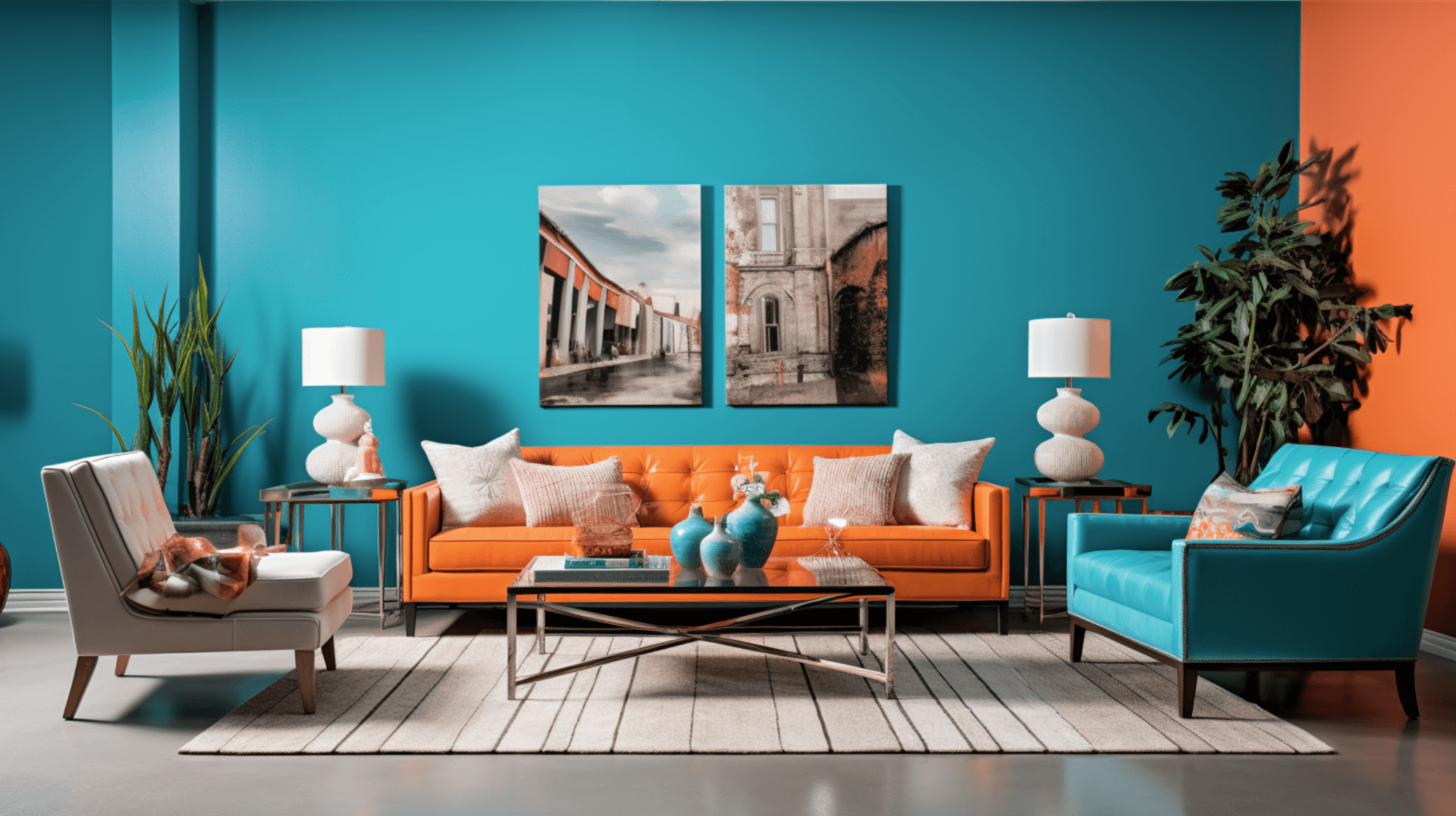
colour plays a crucial role in creating a visually appealing and vibrant living room. By strategically using colour, you can transform your living space into a captivating and inviting environment. This article aims to provide you with practical tips on how to use colour to make your living room pop.
To begin, we will explore the importance of choosing the right colour scheme that suits your personal style and complements your existing decor. Understanding colour psychology will help you create the desired atmosphere and mood in your living room.
We will also discuss the concept of creating a focal point with colour, which can draw attention and add visual interest to the room.
Incorporating accent walls, colourful furniture, and accessories will be explored as effective ways to infuse colour into your living room.
Additionally, we will discuss the concept of a colourful gallery wall, using vibrant rugs and curtains, as well as incorporating plants for both colour and freshness.
Lastly, we will explore the transformative power of paint and how it can update and revitalise your living space.
By following the tips outlined in this article, you can confidently use colour to make your living room pop and create a visually stunning and captivating space.
Choosing the Right colour Scheme
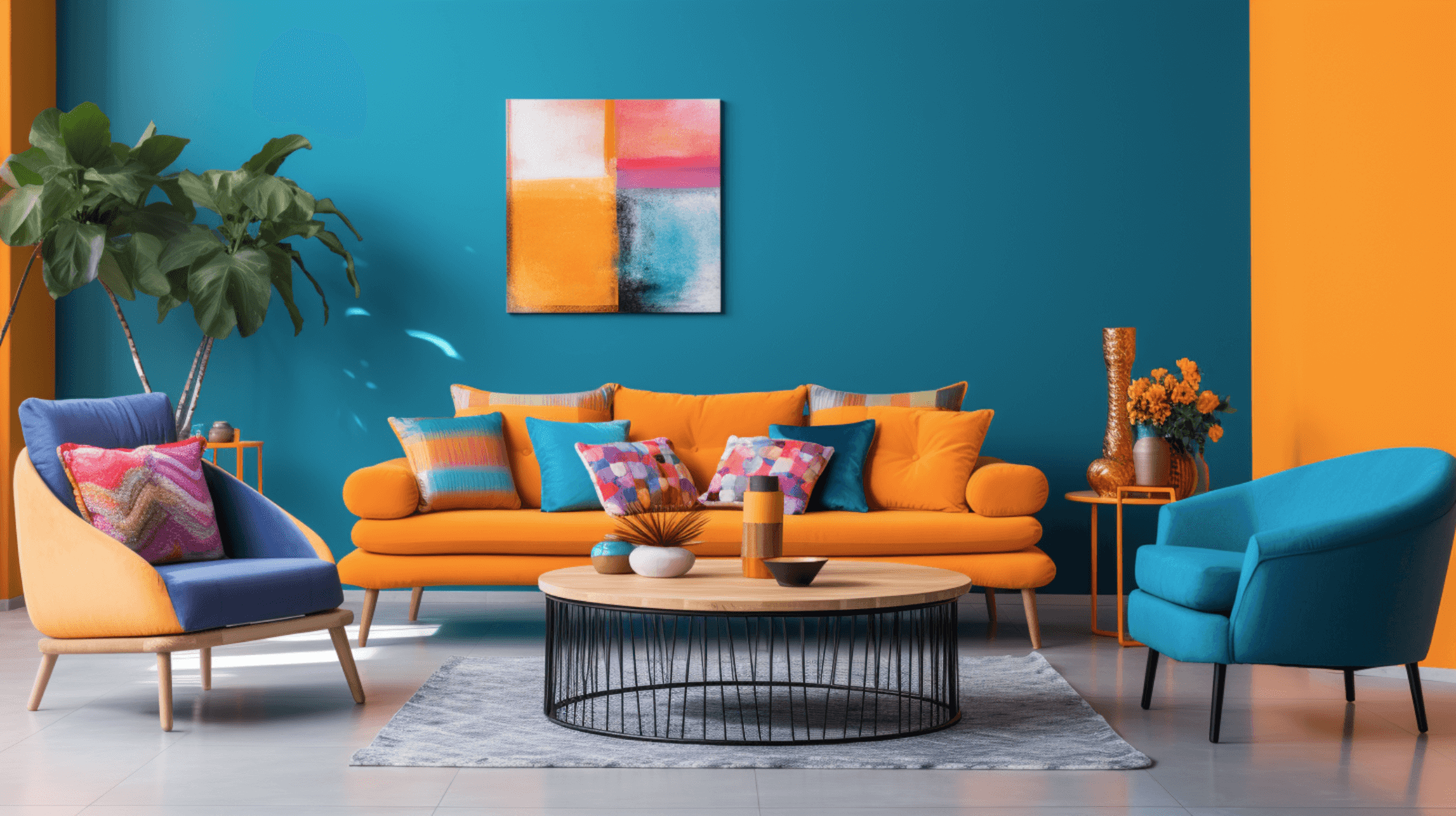
When selecting a colour scheme for your living room, it is crucial to carefully consider the various options in order to create an aesthetically pleasing and visually stimulating space.
The right colour scheme can transform a dull and lifeless room into a vibrant and inviting one. One important factor to consider is the mood you want to create in your living room. Warm colours like red, orange, and yellow can create a cosy and energetic atmosphere, while cool colours like blue, green, and purple can evoke a sense of calm and relaxation.
Additionally, the size and natural lighting of your living room should also be taken into account. Lighter colours can make a small room appear larger and brighter, while darker colours can create a more intimate and cosy feel.
By carefully selecting the right colour scheme, you can make your living room pop and create a space that reflects your personal style and taste.
Understanding colour Psychology
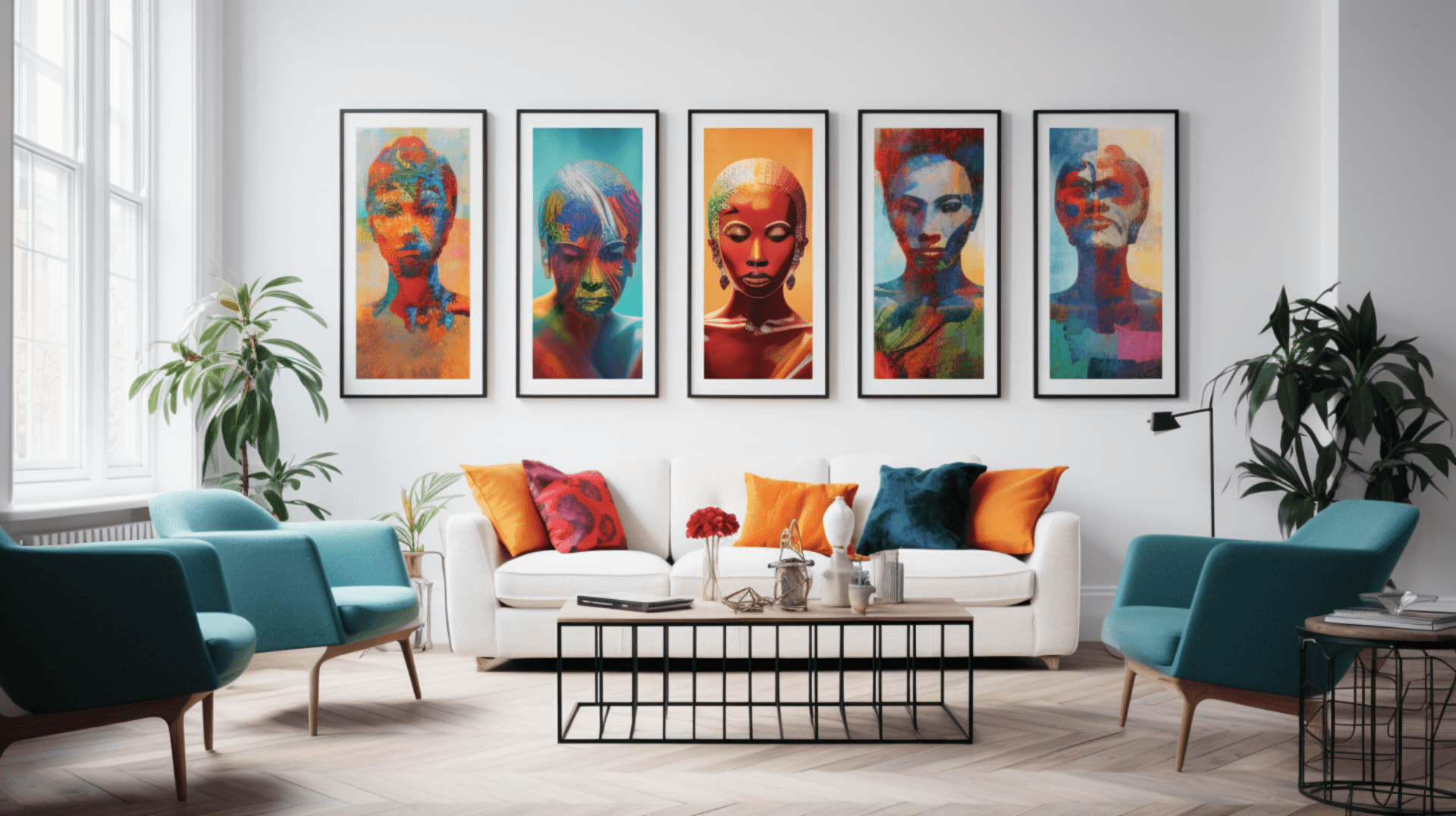
Understanding colour psychology allows one to explore the visual impact of different hues in creating an ambiance within a space. colours have the power to evoke specific emotions and influence our moods, making them a crucial aspect of interior design.
Warm colours like red and orange can create a cosy and inviting atmosphere, while cool colours like blue and green promote relaxation and tranquillity.
Additionally, each colour has its symbolism and cultural associations, which can further contribute to the overall mood of a room. For example, yellow is often associated with happiness and energy, while purple can convey luxury and sophistication.
By understanding the psychological effects of colours, one can strategically incorporate them into the living room to create a desired atmosphere and enhance the overall aesthetic appeal of the space.
Creating a Focal Point with colour
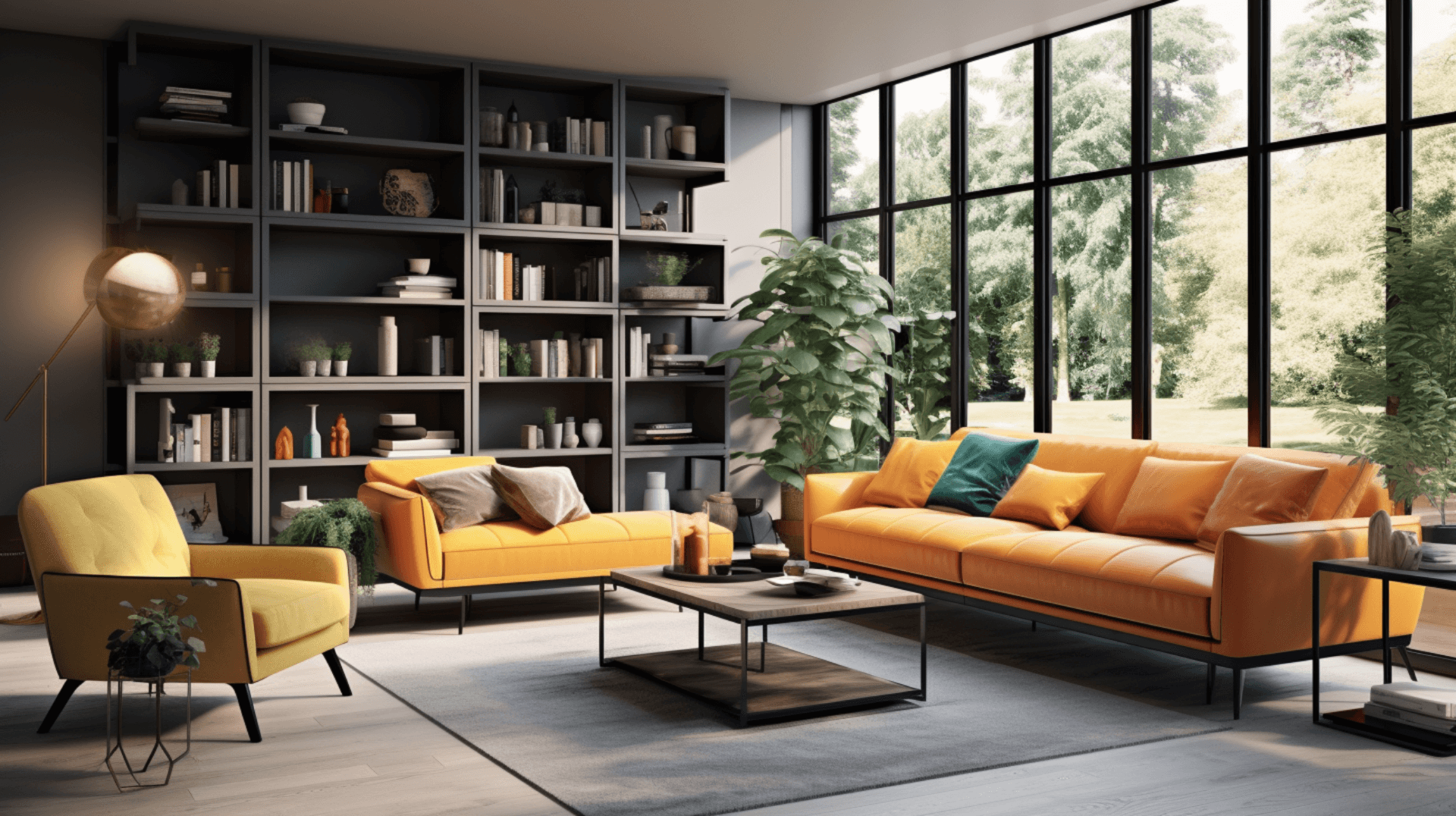
Creating a focal point with colour in interior design is essential for drawing attention and adding visual interest to a space. By strategically incorporating colour, you can create a focal point that becomes the centre of attention in a room. Here are four ways to achieve this:
-
Use a bold, contrasting colour:
By incorporating a bold and contrasting colour in a specific area, such as an accent wall, you can instantly draw attention to that particular spot. -
Highlight a key element:
Choose a colour that complements a key element in the room, such as a piece of artwork or a statement furniture piece, to make it stand out. -
Play with texture:
utilise different textures in the same colour family to create a focal point that adds depth and dimension to the space. -
utilise lighting:
Use lighting techniques, such as spotlighting or highlighting, to emphasise a specific area or object, thus creating a focal point.
By employing these techniques, you can effectively create a focal point in your living room that will make it visually captivating and engaging.
Incorporating Accent Walls
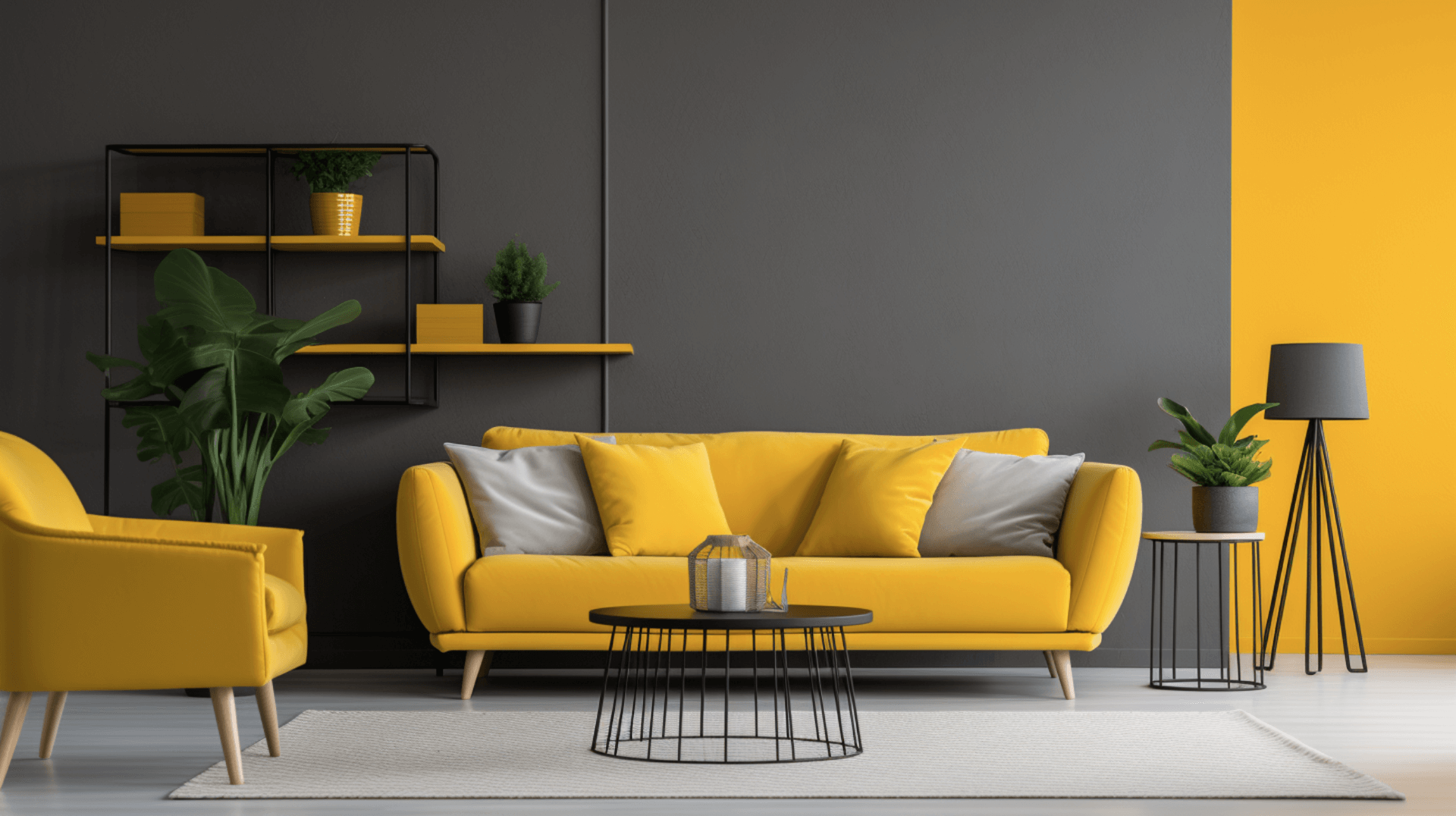
Incorporating accent walls can add visual interest and depth to a room, creating a focal point that draws attention and enhances the overall design.
An accent wall is a wall that is painted or adorned in a contrasting or bold colour, texture, or pattern compared to the other walls in the space. This technique can be used to create a sense of drama and impact, as well as to highlight specific architectural features or furniture pieces.
By strategically placing an accent wall in the living room, it can create a sense of balance and harmony. It is important to select the right colour and texture for the accent wall, as it should complement the existing colour scheme and dcor of the room.
The accent wall should also be positioned in a way that it does not overpower the space, but rather adds a pop of colour and interest.
Using colourful Furniture and Accessories
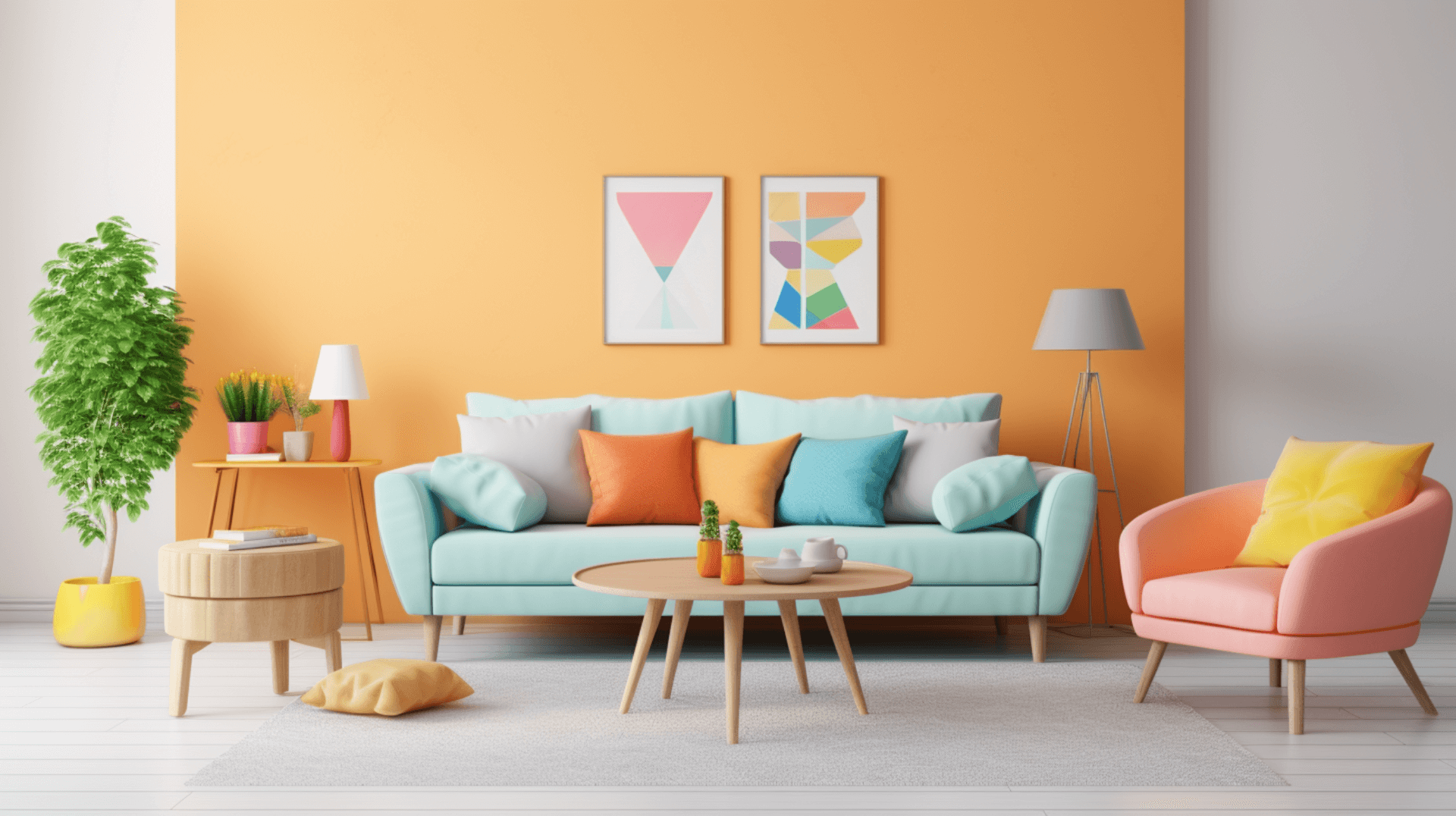
utilising vibrant furniture and accessories can inject a lively and captivating element into the design scheme of a living room, elevating its overall aesthetic appeal.
colourful furniture and accessories serve as focal points, drawing attention and creating a sense of visual interest within the space. Vibrant sofas, chairs, or coffee tables can become statement pieces, adding personality and character to the room.
Additionally, incorporating colourful throw pillows, rugs, or curtains can instantly transform a neutral living room into a vibrant and inviting space.
The strategic use of colour in furniture and accessories can also create a harmonious and balanced atmosphere. By selecting complementary shades or incorporating contrasting colours, one can create a visually appealing and cohesive design scheme.
Ultimately, the addition of colourful furniture and accessories allows for the creation of a living room that pops with personality and style.
Playing with Patterns and Textures
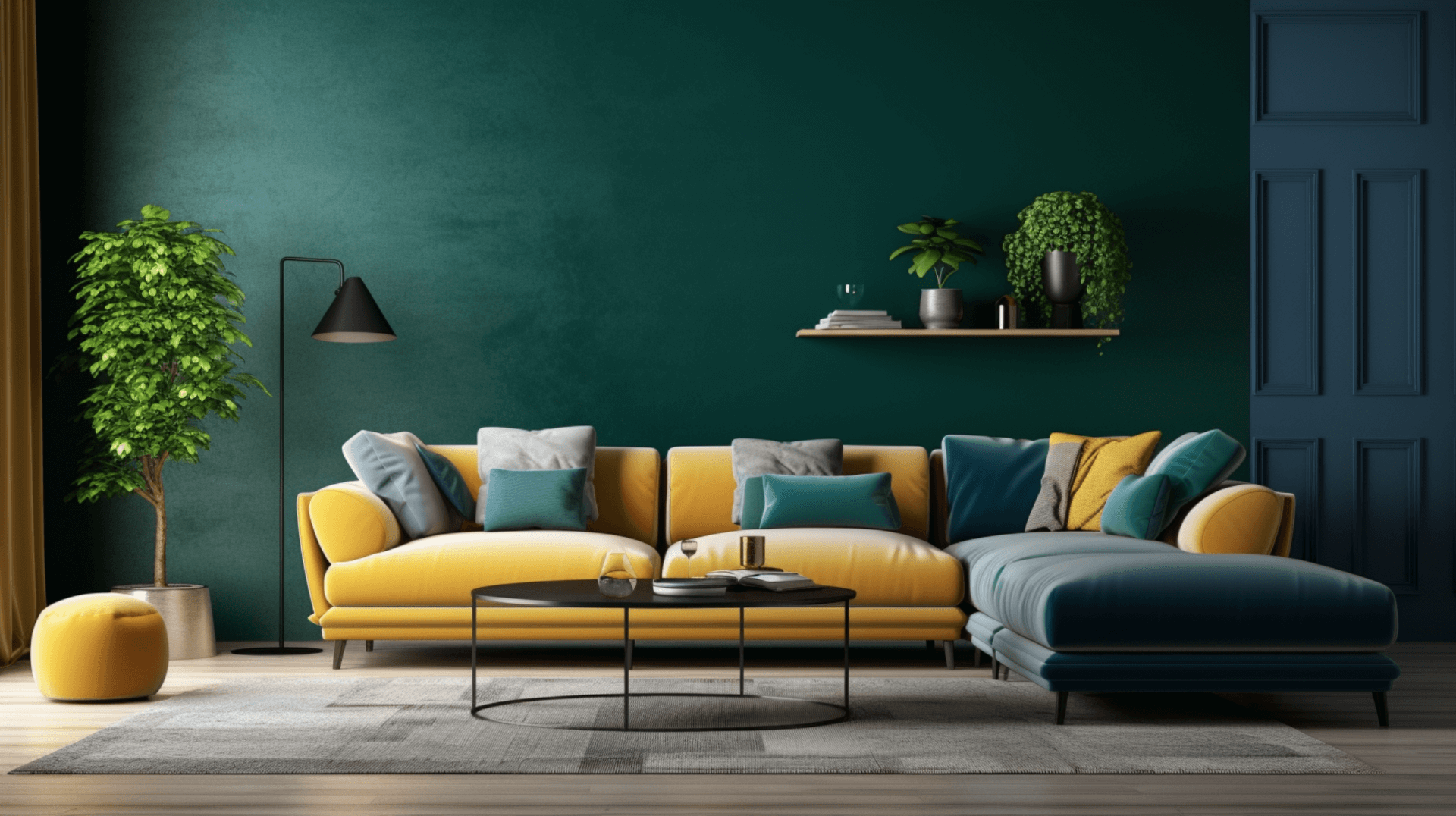
One can enhance the visual appeal and add dimension to their living room design by exploring various patterns and textures in furniture and accessories. Incorporating patterns and textures can create a sense of depth and interest in a room that would otherwise appear flat and monotonous.
Here are four ways to play with patterns and textures in your living room:
-
Mix and match different patterns: Combine stripes, florals, and geometric prints to create a visually stimulating effect. Make sure to choose patterns that complement each other and create a cohesive look.
-
Incorporate textured fabrics: Use materials like velvet, silk, or faux fur to add tactile interest to your furniture. These textures not only add depth but also provide a luxurious and cosy feel to the space.
-
Layer different textures: Combine smooth and rough textures to create contrast and visual interest. For example, pair a sleek leather sofa with a chunky knit throw or a shaggy rug.
-
Experiment with textured accessories: Add visual interest to your living room by incorporating textured accessories like patterned pillows, woven baskets, or textured vases. These small details can make a big impact and tie the whole room together.
By incorporating patterns and textures, you can create a living room that is visually appealing, engaging, and inviting.
Balancing Bold and Subtle colours
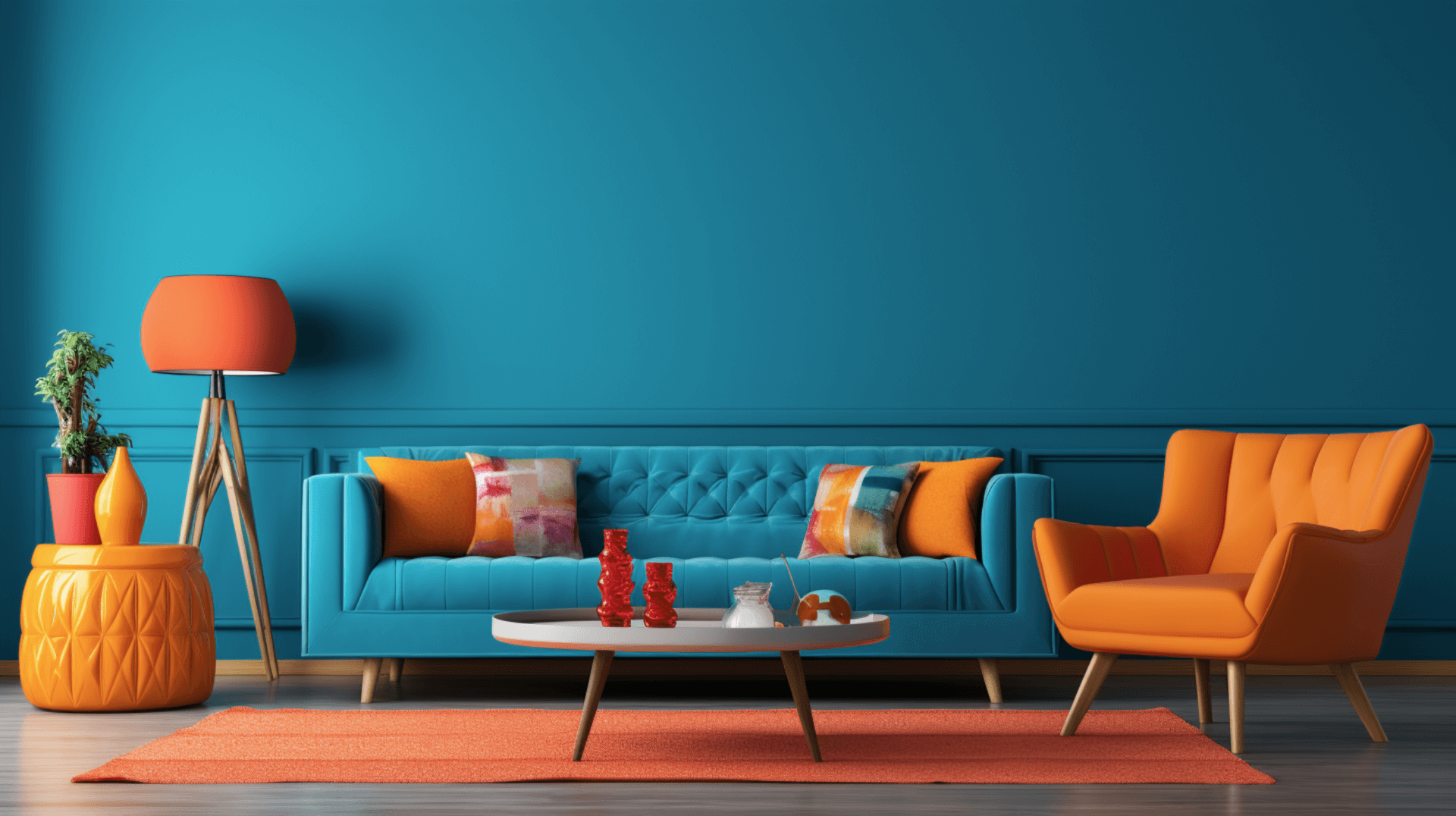
To achieve a harmonious visual balance in a living room design, it is essential to carefully consider the interplay between bold and subtle colours.
Balancing bold and subtle colours can create a dynamic and visually appealing space. Bold colours, such as vibrant reds or deep blues, can be used as accent pieces or focal points in the room. These colours can add energy and excitement to the space.
On the other hand, subtle colours, like soft pastels or neutral tones, can be used as the main colour scheme to create a calming and relaxing atmosphere. These colours provide a sense of balance and harmony.
By combining bold and subtle colours, one can create a living room that is visually striking yet cohesive. The key is to use bold colours sparingly and balance them with more subdued tones, creating a visually pleasing and well-designed space.
Adding Natural Elements for a Pop of colour
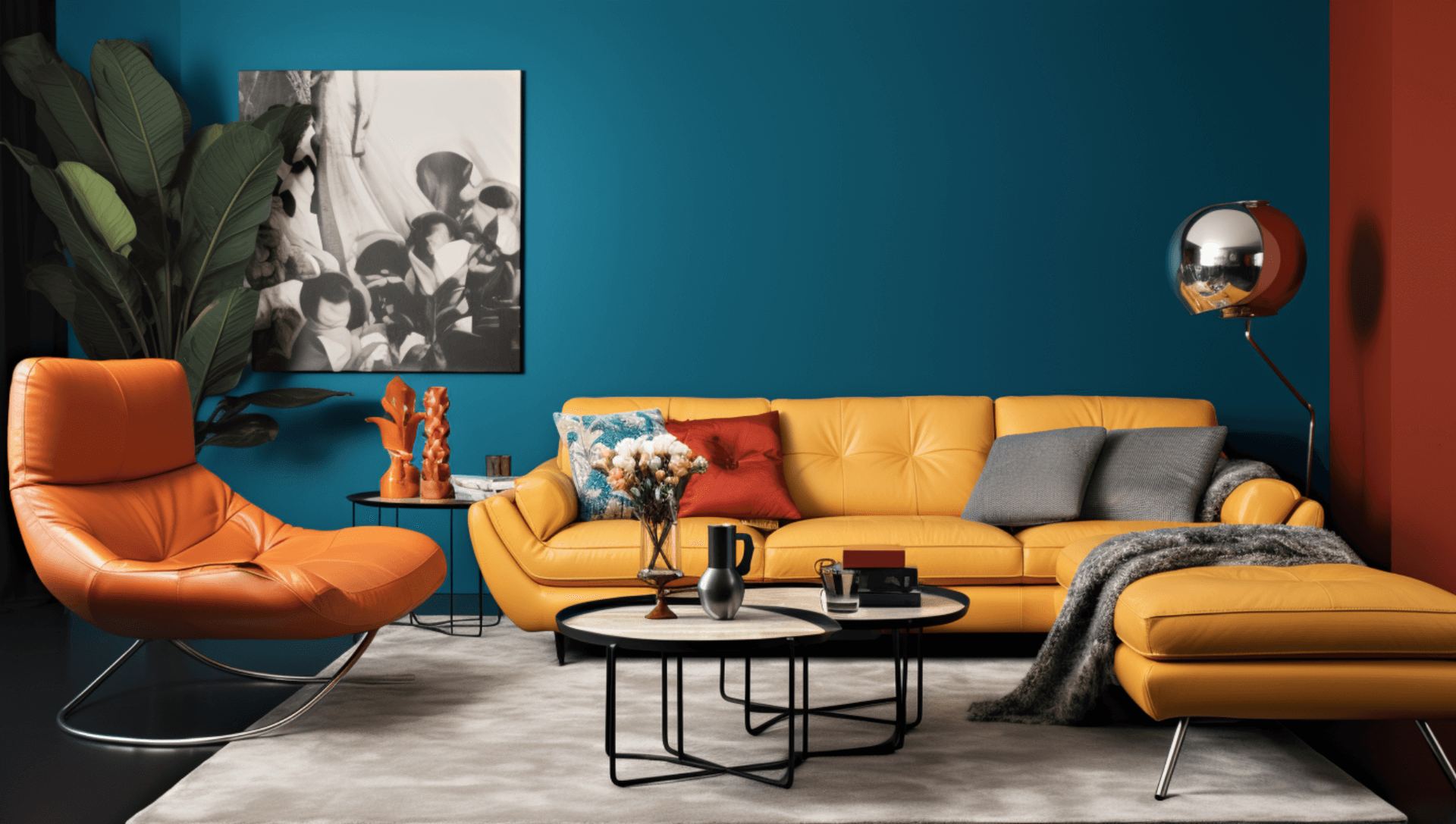
Incorporating natural elements into the living room design can introduce vibrant bursts of colour. By adding these elements, the room can come alive and create a sense of harmony with the surrounding environment. Here are five ways to add natural elements for a pop of colour:
-
Place a large potted plant in the corner of the room to bring in a splash of greenery and create a refreshing atmosphere.
-
Hang a landscape painting on the wall to add depth and introduce shades of blue, green, and brown.
-
Use wooden furniture or accessories to bring warmth and texture to the space, such as a coffee table made of reclaimed wood or driftwood shelving.
-
Display a bowl of fresh fruits or a vase of flowers on a side table to add a vibrant touch of colour and create a lively focal point.
-
instal bamboo blinds or curtains to let in natural light and create a soft, earthy ambiance.
Incorporating these natural elements can transform a living room, making it visually appealing and inviting.
Using Lighting to Enhance colours
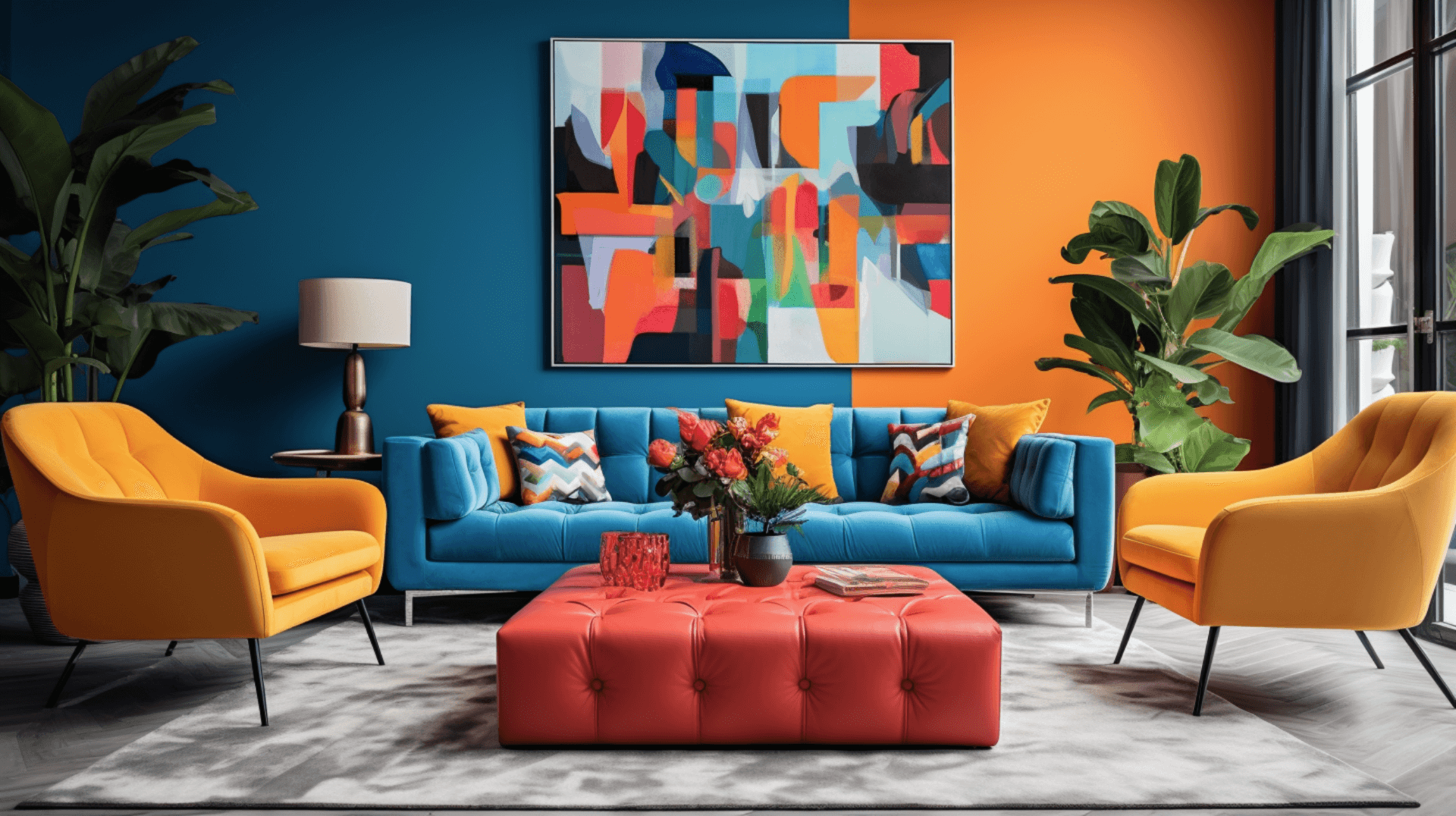
utilising different lighting techniques can effectively enhance the colours in a living room, creating an ambiance that is both visually captivating and inviting.
Lighting plays a crucial role in the perception of colour, as it has the ability to alter the way colours are perceived by the human eye. By strategically placing light fixtures throughout the living room, one can highlight specific areas or objects, drawing attention to their vibrant hues.
For instance, using spotlights or track lighting can accentuate colourful artwork or furniture, making them stand out and become focal points in the room.
Additionally, adjusting the intensity and colour temperature of the lighting can also affect the overall appearance of the colours in the space. Warmer lighting can evoke a cosy and intimate atmosphere, while cooler lighting can create a more vibrant and energising ambiance.
By employing various lighting techniques, one can transform a living room into a visually stimulating and aesthetically pleasing space.
Considering the Size and Layout of Your Room
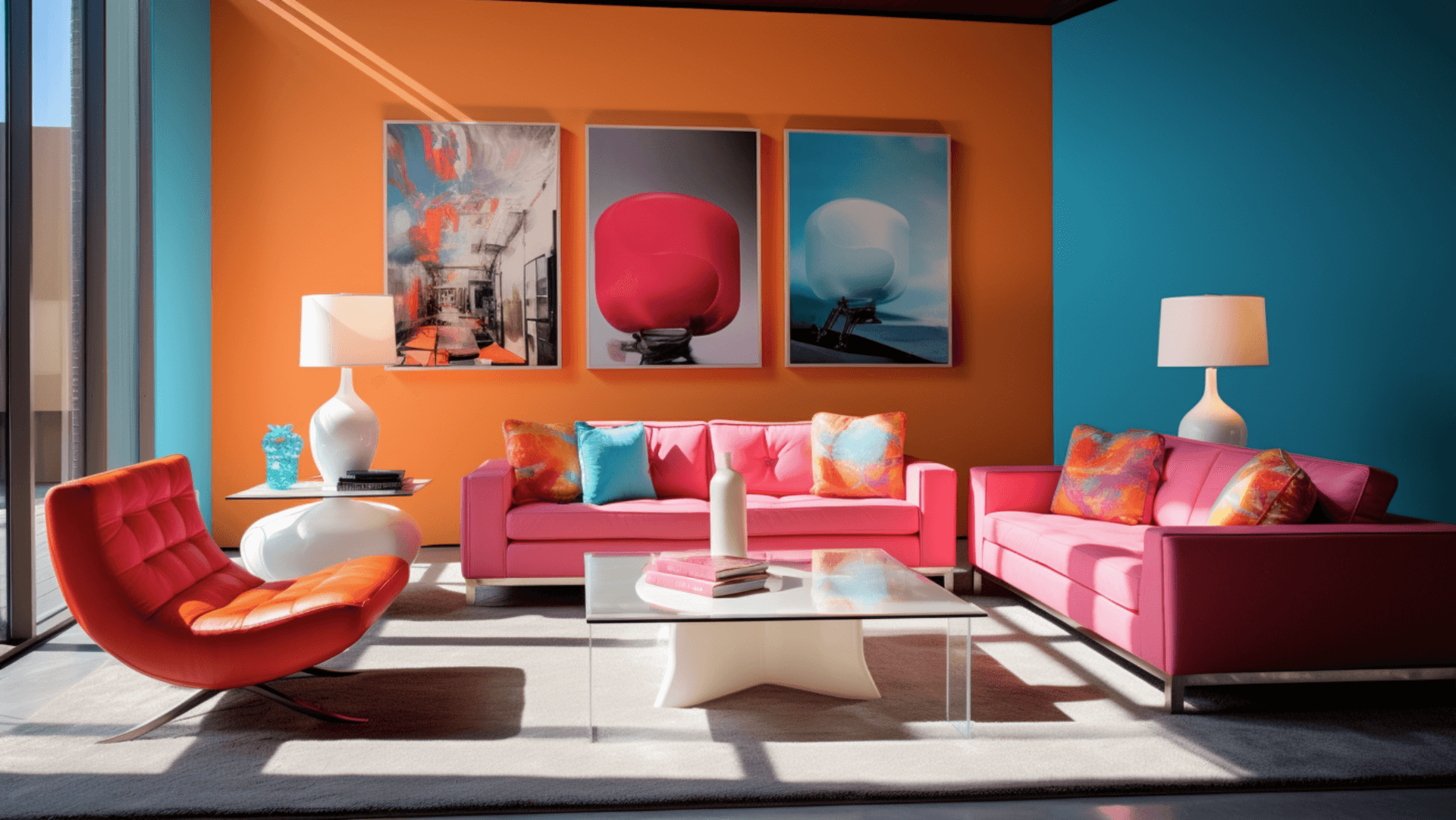
Considering the size and layout of the room, an analysis of the available space and its dimensions can guide the selection and placement of furniture and decor, ensuring a harmonious and balanced arrangement. By taking into account the room’s size, one can determine the appropriate size and number of furniture pieces to avoid overcrowding or creating a sparse atmosphere.
Additionally, understanding the layout of the room helps in identifying focal points and determining the best placement for furniture and decor items. This allows for the creation of a visually appealing and functional space. A well-planned layout can also enhance the flow of the room, making it easier to navigate and creating a sense of openness.
Ultimately, considering the size and layout of the room is crucial in creating a living room that feels inviting, comfortable, and aesthetically pleasing.
- Sub-list 1:
- A well-arranged room can create a sense of calm and relaxation, promoting a positive and peaceful atmosphere.
-
A clutter-free space can make the room feel more spacious and organised, reducing stress and promoting a sense of tranquillity.
-
Sub-list 2:
- A balanced layout can create a visually pleasing environment, making the room appear more appealing and inviting to guests.
- By optimising the layout, one can maximise the functionality and efficiency of the space, ensuring that it meets the needs and preferences of its occupants.
Exploring Different colour Combinations
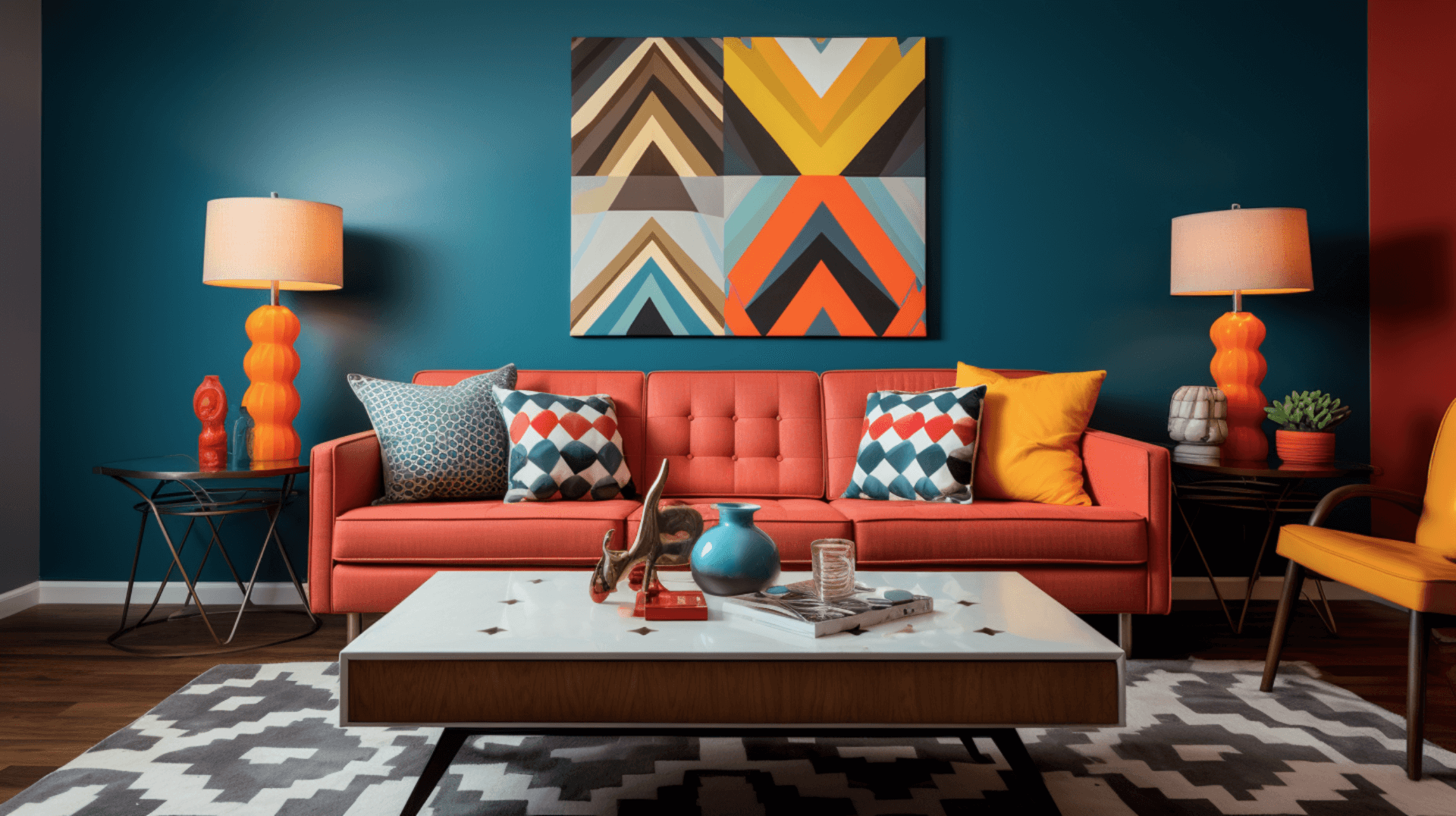
When it comes to making your living room pop with colour, exploring different colour combinations can be a game-changer. The right colour combination can create a harmonious and visually appealing atmosphere in your space.
Consider using complementary colours, which are opposite each other on the colour wheel, to create a bold and striking look. For example, pairing a deep blue with a vibrant orange can add a dynamic energy to your room.
On the other hand, analogous colours, which are next to each other on the colour wheel, can create a more serene and cohesive feel. For instance, combining shades of green and blue can give your space a calming and relaxing vibe.
By experimenting with different colour combinations, you can find the perfect palette that will make your living room truly pop.
Creating a colourful Gallery Wall
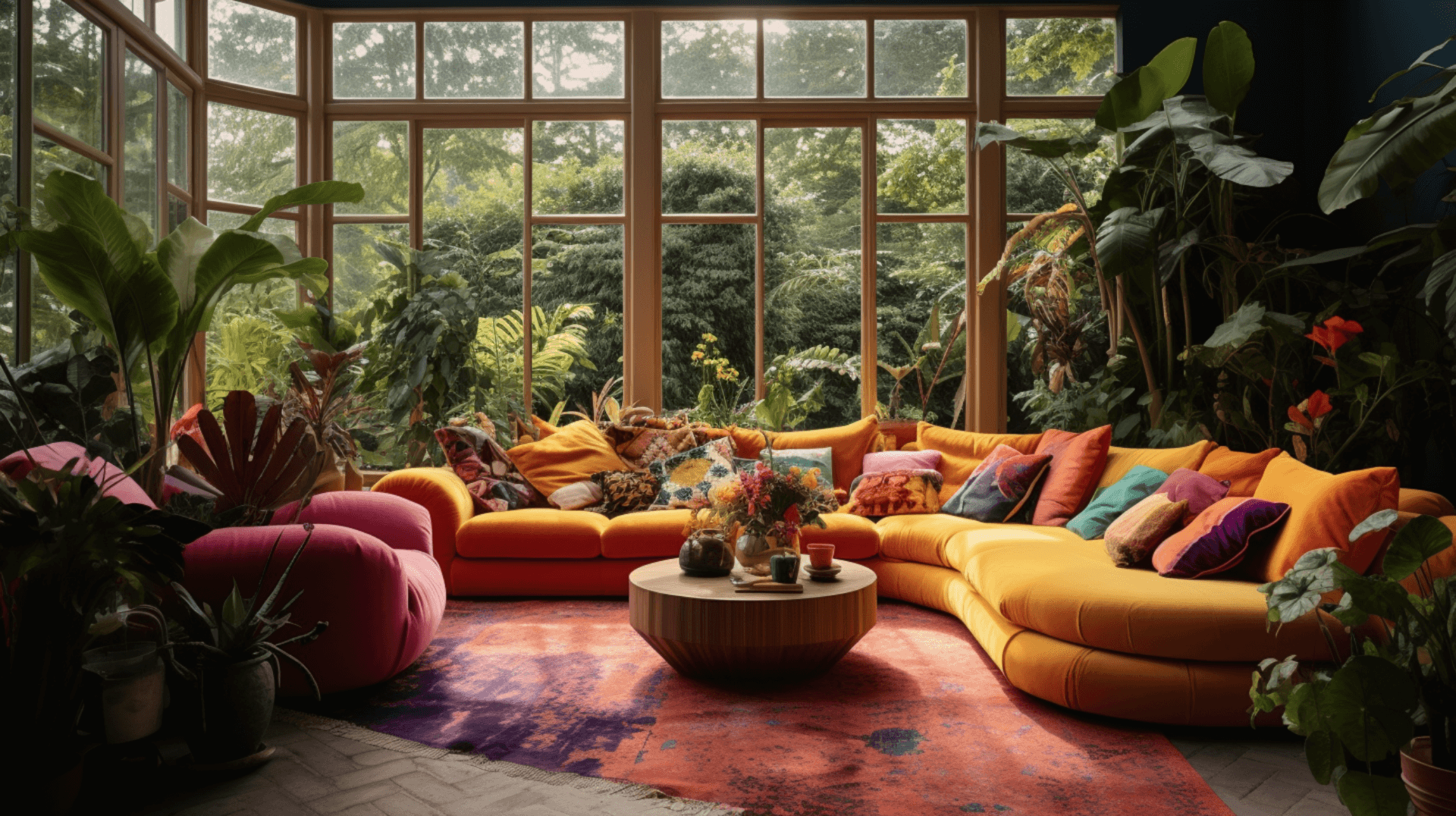
To create a visually captivating display, one can curate a vibrant gallery wall that incorporates an array of colourful artwork. Such a gallery wall can add depth and personality to a living room, making it a focal point of the space.
Consider the following tips to create a colourful gallery wall:
-
Mix and match: Combine different sizes, styles, and mediums of artwork to create a dynamic composition.
-
colour coordination: Choose artwork that complements the existing colour scheme of the room, creating a cohesive look.
-
Play with patterns: Incorporate patterns in some of the artwork to add visual interest and texture to the gallery wall.
By following these tips, one can create a gallery wall that not only adds pops of colour to the living room but also showcases personal style and creativity.
Using colourful Rugs and Curtains
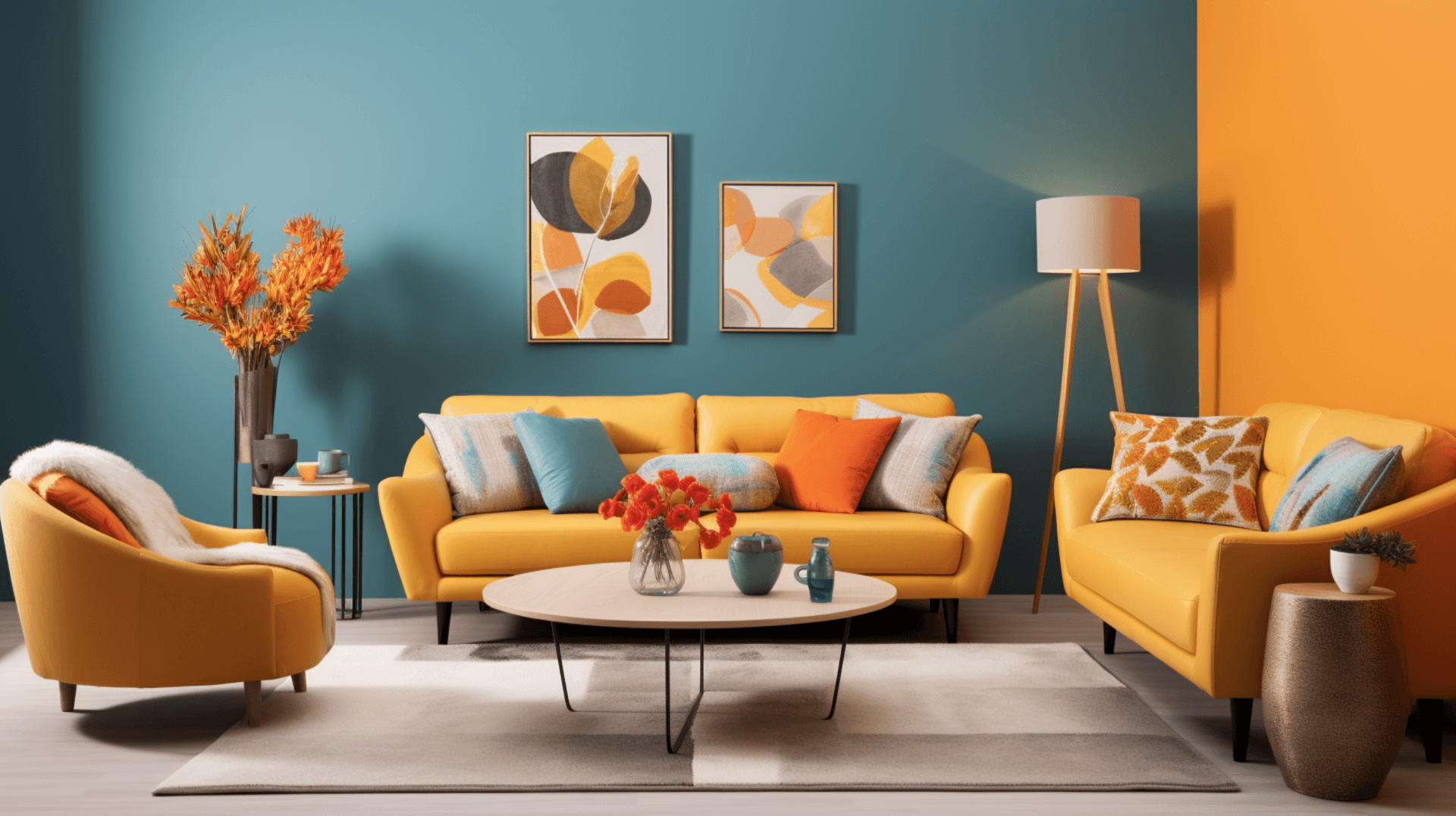
A vibrant and visually captivating living room can be achieved by incorporating colourful rugs and curtains that add depth and personality to the space.
colourful rugs and curtains serve as focal points in a room, drawing the eye and creating visual interest. When selecting rugs and curtains, it is important to consider the existing colour scheme and overall aesthetic of the room.
Bold and vibrant colours can inject energy into a space, while softer hues can create a calming and serene atmosphere. Additionally, patterns and textures can further enhance the visual impact of colourful rugs and curtains. Geometric patterns can add a modern and contemporary feel, while floral or abstract patterns can bring a touch of whimsy and playfulness.
Ultimately, using colourful rugs and curtains allows homeowners to infuse their living rooms with personality and create a visually striking space.
Incorporating Plants for colour and Freshness
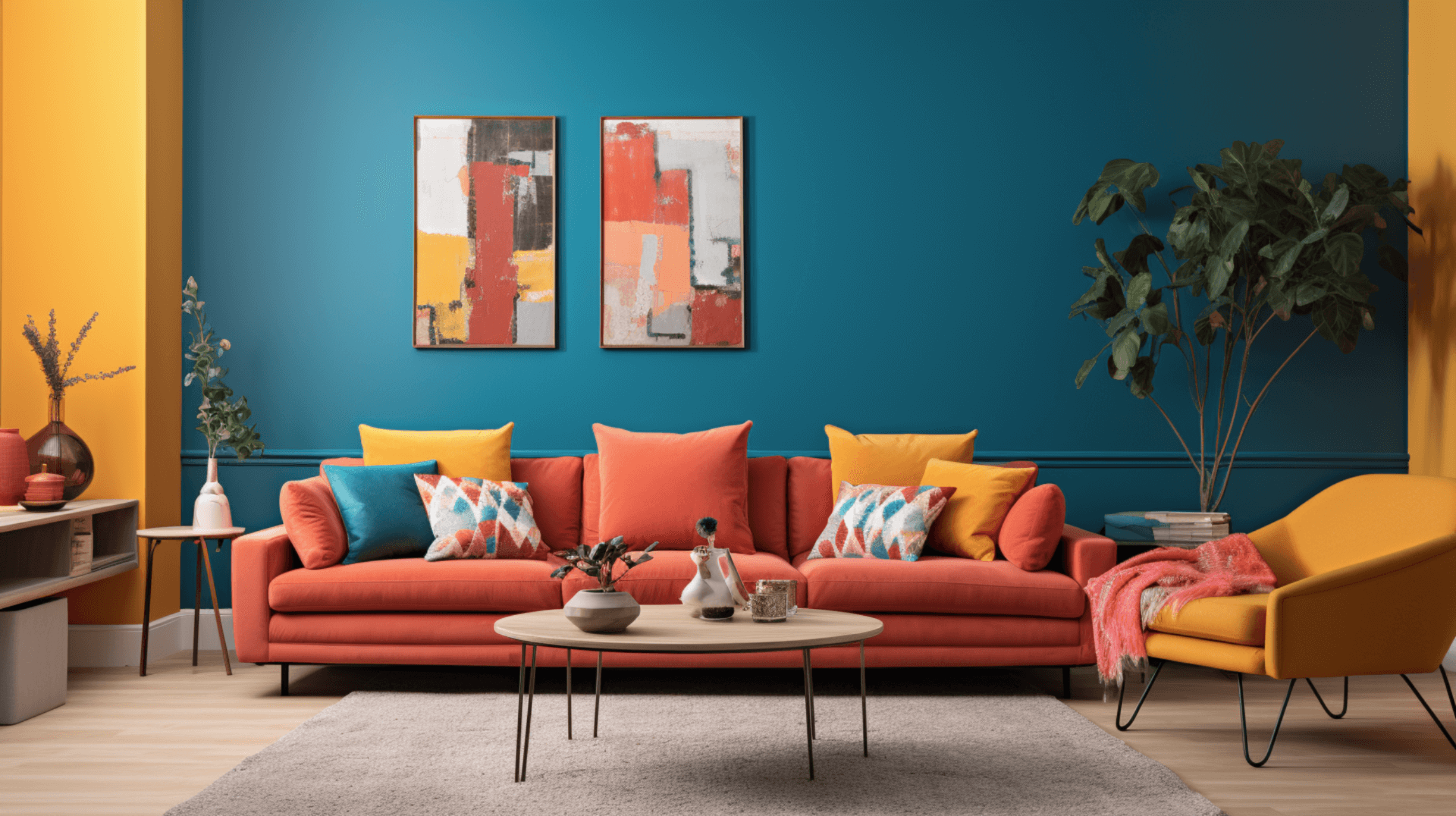
Incorporating plants into the living room brings a vibrant touch of colour and a refreshing element of nature. Plants not only add beauty and visual interest to the space but also provide numerous benefits.
Here are five ways to incorporate plants into your living room:
-
Choose plants with colourful leaves or flowers to add pops of colour to the room.
-
Use hanging or trailing plants to add vertical interest and create a sense of depth.
-
Place plants strategically near windows to take advantage of natural light and create a cosy atmosphere.
-
Consider using plants with different textures and shapes to create visual contrast.
-
Group plants together to create a mini indoor garden and make a statement.
By incorporating plants into your living room, you can create a vibrant and refreshing space that brings nature indoors.
Updating Your Living Room with Paint
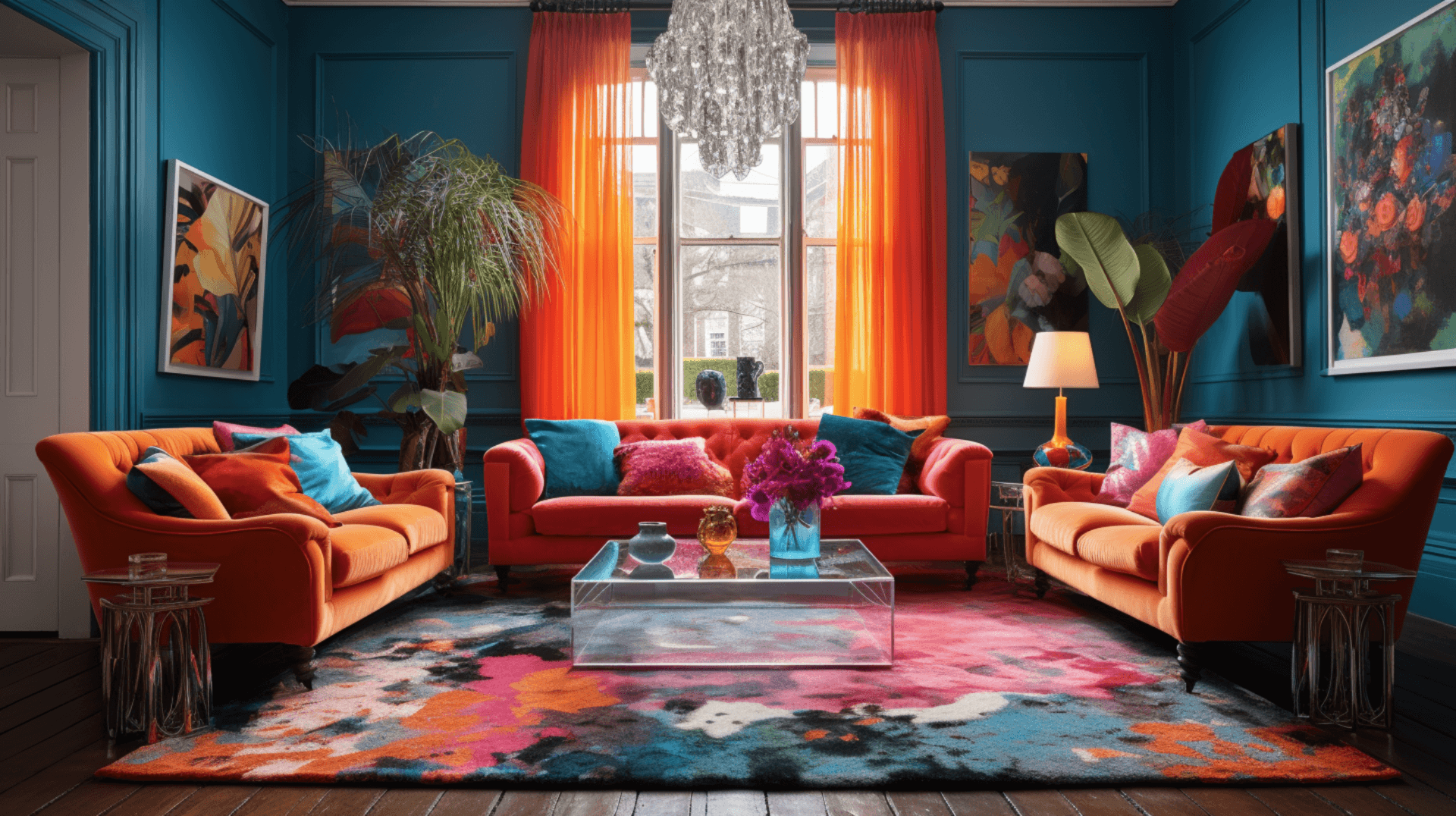
Incorporating plants into your living room can add a vibrant touch of colour and freshness. However, if you’re looking to make a bolder statement and truly transform your space, updating your living room with paint is a great option. Paint has the power to completely change the look and feel of a room, and it offers endless possibilities for creating a unique and personalised space.
Whether you want to add a pop of colour to an accent wall or completely revamp the entire room, choosing the right paint colours can make a significant impact. From soothing neutrals to bold and bright hues, the options are limitless.
By updating your living room with paint, you can instantly breathe new life into your space and create a visually stunning and inviting atmosphere.
Conclusion
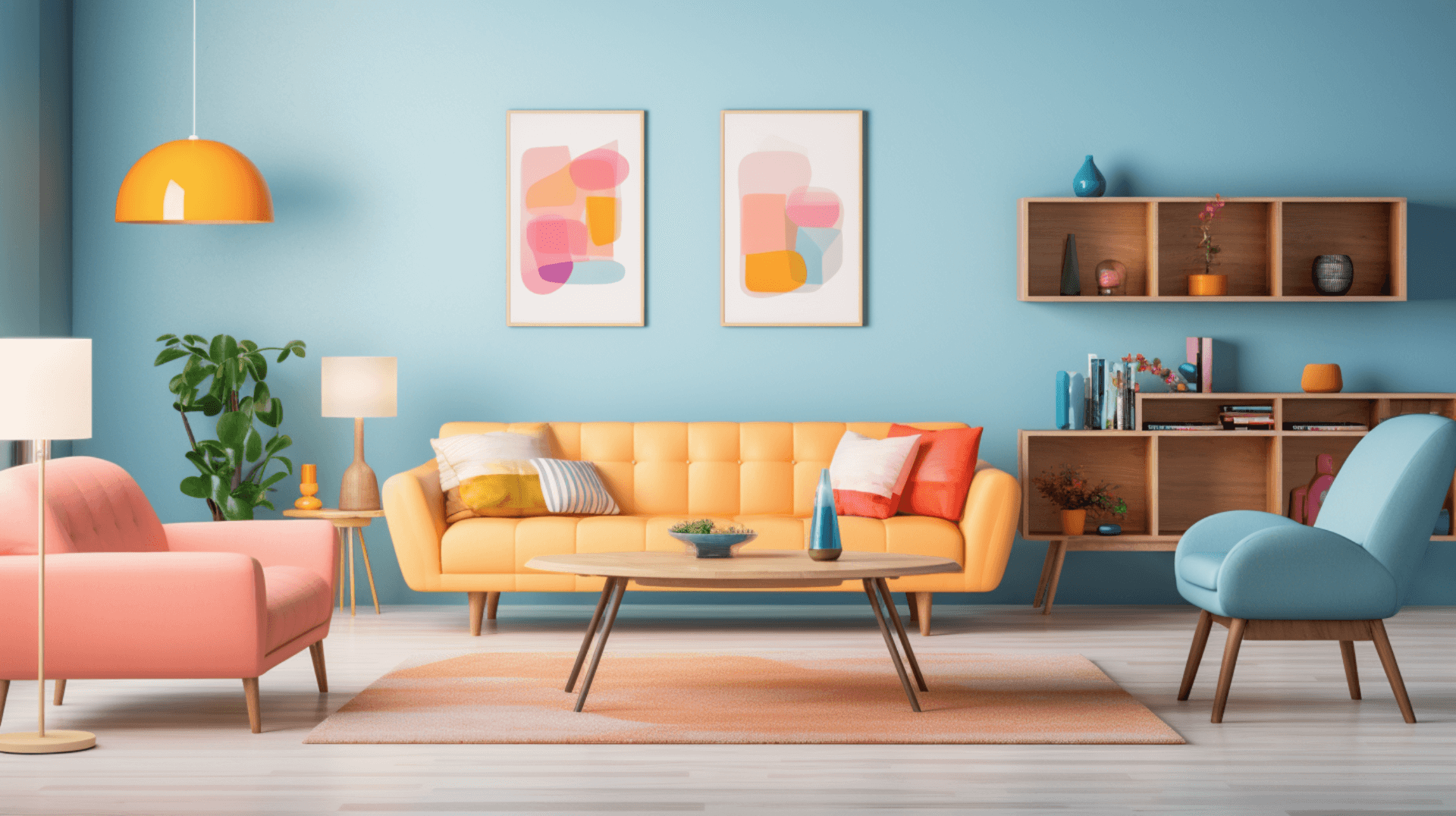
In conclusion, using colour effectively in your living room can make a significant impact on the overall look and feel of the space.
By choosing the right colour scheme, understanding colour psychology, and incorporating colourful elements such as furniture, accessories, accent walls, rugs, curtains, and plants, you can create a vibrant and visually appealing living room that truly pops.
Don’t underestimate the power of colour in transforming your living room and making it a more enjoyable and inviting space.


